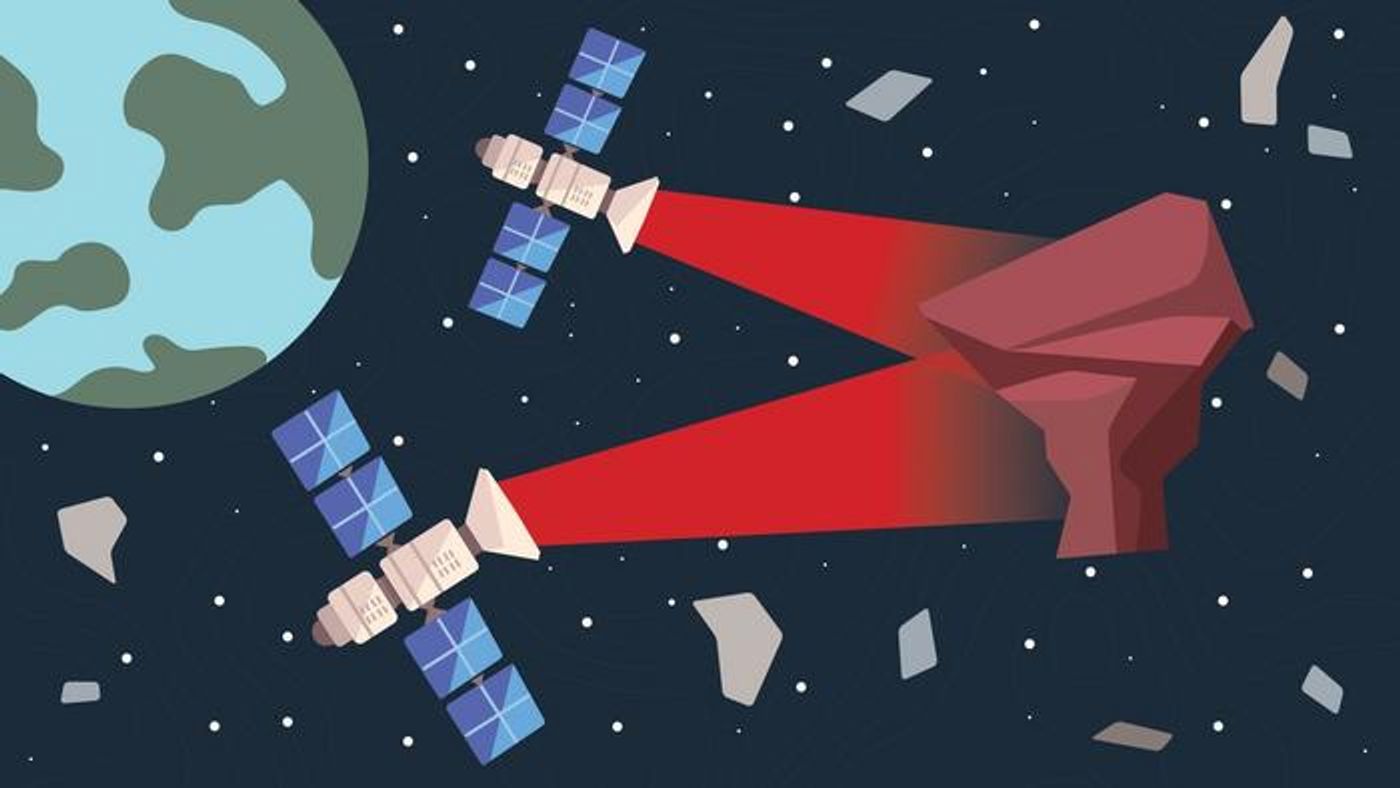Space Debris Mitigation: A Network of AI-Powered Lasers
A West Virginia University (WVU) researcher was recently awarded NASA’s distinguished Early Career Faculty award worth a total of $600,000 for three years to help mitigate the amount of space debris, also called “space junk”, by nudging the debris into a new orbit via AI-powered lasers mounted on orbiting platforms. Currently, the research is just getting started, as the team is validating programming algorithms that will eventually allow the system to operate autonomously.
Artist illustration of the AI-powered laser system being developed by this study with the goal of mitigating space debris. (Credit: WVU Illustration/Savanna Leech)
This award comes on the heels of NASA selecting three proposals in September 2022 whose goals will also be to mitigate space debris. The NASA Orbital Debris Program Office currently tasked with developing mitigation measures against space debris and the risks it poses for space missions.
“That increased population of objects heightens the risk of collisions, endangers manned missions, and jeopardizes high-value scientific and industrial missions,” said Dr. Hang Woon Lee, who is director of the Space Systems Operations Research Laboratory at WVU and recipient of the award.
As noted, the system will be AI-powered, meaning it will decide on its own how many lasers to use to steer a piece of debris into the new orbit, while also ensuring a debris-free final trajectory. The final configuration of the laser platforms is still being hammered out, with options including laser mounted on large satellites or laser with their own platforms. While the lasers are powerful enough to vaporize small pieces of the debris, they will still push the much larger piece into a new orbit via a high-velocity plasma plume.
Dr. Lee said: “Using a system of multiple lasers can create multiple engagement opportunities with debris and lead to more efficient control of the trajectories. Several lasers can act simultaneously on a single target at a greater spectrum of intensity, altering its trajectory in a way that would be impossible with a single laser.”
As noted, space debris is becoming a legitimate concern for space missions, as the European Space Agency currently estimates there are 29,000 pieces larger than 10 cm (4 in), 670,000 larger than 1 cm (0.4 in), and more than 170 million larger than 1 mm (0.04 in). Currently, all space debris larger than 10 cm are monitored by the U.S. Department of Defense’s global Space Surveillance Network (SSN), and with space debris events dating back to the 1960s.
How will this AI-powered laser system help mitigate space debris in the coming years and decades? Only time will tell, and this is why we science!
As always, keep doing science & keep looking up!
Sources: EurekAlert!, European Space Agency, NASA, WVU Today, European Space Agency (1), Federation of American Scientists, Wikipedia









